Finding Dory Review
Finding Dory is Pixar’s latest film, a sequel that many of us (myself included) questioned as unnecessary when it was originally announced. This spoiler-free review takes a look at whether Finding Dory lives up to the high bar set by Finding Nemo or if it’s a blatant cash grab that simply swaps title characters.
While there’s no formulaic “recipe” to Pixar’s success (if there were, every studio would’ve copied it by now), I think it’s safe to say that Finding Nemo was so popular because of its mesmerizing ‘big blue world’ and the way it took a fairly standard plot mechanism and gave it a ton of heart and humor. Based upon what we’ve heard about Finding Dory leading up to its release, it seemed the sequel would offer its own twist on that same formula.
It was thus surprising (and puzzling) when the vibrant open-ocean action was truncated to move the story forward to the tighter confines of the ‘Jewel of Morro Bay’ rescue, rehabilitation, and release facility (a fictional location set in real-life Morro Bay, CA and based upon real-life Monterrey Bay Aquarium–sidebar: contrary to some reports, I don’t think aquariums are presented in a negative light in Finding Dory). This seems like a huge risk given that the chance to explore the more beautifully-rendered wonders of the ocean is, failing all else, the “safety net” that would preclude Finding Dory from drawing comparisons to Cars 2.
Arguably, this risk paid off, as the setting is one of the big distinctions that separates Finding Dory from the original. The scenes inside of the Jewel of Morro Bay certainly are not as visually resplendent as the deep blue world of the original, but it’s still stunning (as always, I’m looking forward to picking up The Art of Finding Dory). More importantly, the aquarium setting provides a lot of unique opportunities for the film, both in terms of plotting and wry humor. If the goal was to differentiate the sequel from the original while still utilizing the “finding” story, this was largely a successful gamble.
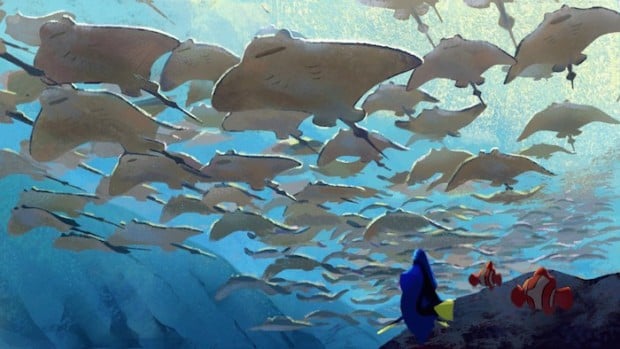
We thus turn to the story itself. Unlike Finding Nemo, which remains thoroughly engrossing even on repeat viewings, Finding Dory does not have the same magic. Both are highly implausible, but a great animated film–like the original–creates a suspension of disbelief so that the unlikelihood of its events goes unnoticed. That doesn’t always happen in Finding Dory, as there are moments here that feel more Michael Bay than Walt Disney. This is not to say the events don’t work–it’s all very clever and, to its credit, the most implausible moment is laugh out loud funny.
Beyond that, there were a few moments where I found myself beginning to feel pulled out of the action as it felt like another “incredible journey” retread. This only lasted–literally–moments. Thanks to twists, endearing moments, or clever jokes, I always found myself pulled back in. This is mostly accomplished via an excellent supporting cast of new marine life.
In another decision that surprised me, Nemo and Marlin aside, most of the original characters only have cameos. Crush and Mr. Ray only have a few moments of camera time, and others from the original are not present at all. If anything, I figured the sequel would be eager to revisit favorites to play on audience nostalgia. That it did not was absolutely fine, because Nemo and Marlin don’t add much, and the new characters are superb. In particular, the trio of whale shark Destiny, beluga Bailey, and octopus (“septopus”) Hank do the heavy-lifting both in terms of screen-time and providing wonderful moments.
I will say that Hank feels purposefully under-developed. You’re never given more than a very cursory why for his character’s actions, which makes the payoff moment between he and Dory a bit unearned. My speculation would be that something was held back (or cut?) here to save for a sequel/prequel featuring Hank. He’s otherwise the breakout character, and Dory describes him best by calling him grumpy yet lovable (making Ed O’Neil pitch-perfect casting). That aside, Hank still manages to be the breakout character in a film that introduces a lot of really good characters.
Other minor characters, such as the two sea lions, make a strong impression despite limited screen time. A couple of the funnier moments of the movie come from these sea lions giving an anthropomorphic “explanation” to real life sea lion behavior. Likewise, other bit players play up their animal reputations for laughs.
On the other end of the spectrum, you have the main character. Going into the film, I felt that the entire premise of Dory as a character works better with a less-is-more approach. Her whole schtick has the potential to get pretty grating, and she was utilized deftly in the original to avoid overdoing the gag. I think this is something Stanton and co. realized would need to be addressed in Finding Dory.
This is addressed, and within the opening minutes of the movie as it pivots from Dory’s memory loss as comedic relief to an actual disability that she has carried with her since birth. This repositioning is gracefully accomplished, and leaves the viewer with a surplus of empathy for her. (There are times after when the whole memory loss thing does feel like a gag, but it’s mostly used in service of the plot.)
This gives greater meaning to Dory’s quest and makes the inevitable outcome much more satisfying. To be sure, this isn’t really a shift in Dory’s character so much as it is the characterization of her, and it works very well to give the incredible journey more dramatic heft. The emotional thrust of flashback scenes and Dory’s journey along the way is another element that works very well to prevent Finding Dory from entering retread territory, most of the time.
Ultimately, it’s this repositioning of Dory’s character as a figure of resilience and determination that makes the film effective, above all else. There’s also a lot that works here with other characters, clever adult humor, and heartwarming (sometimes nostalgic) moments. For me, Finding Dory is a lot like two other Pixar movies: Finding Nemo and The Good Dinosaur. While the former is an undeniable classic, the latter I described as lighthearted fun with its share of problems in our review. I would put Finding Dory somewhere in between the two: significantly better than the dino journey, but not approaching the classic status bestowed upon the original. There’s still a lot to love about Finding Dory, and like Pixar’s best, it has a ton of heart. That, plus humor and great characters amounts to a recipe for success with younger audiences and a reasonably enjoyable film for adults.
For Disney updates, discount information, a free download of our Money-Saving Tips for Walt Disney World eBook, and much more, sign up for our free monthly newsletter!
If you enjoyed this post or found it helpful, we’d really appreciate it if you’d share it via social media to help spread the word. 🙂
YOUR THOUGHTS…
Are you looking forward to Finding Dory? Are you looking forward to the trip down memory lane, revisiting these characters? If you’ve seen it, do you have any spoiler-free feedback? Any standout characters from the new crew that you’d like to see in the parks? Share any of your thoughts in the comments!

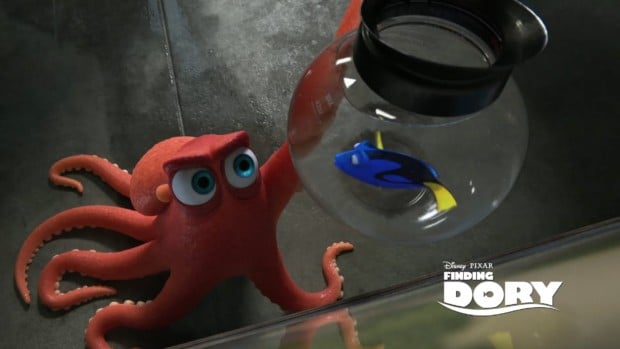
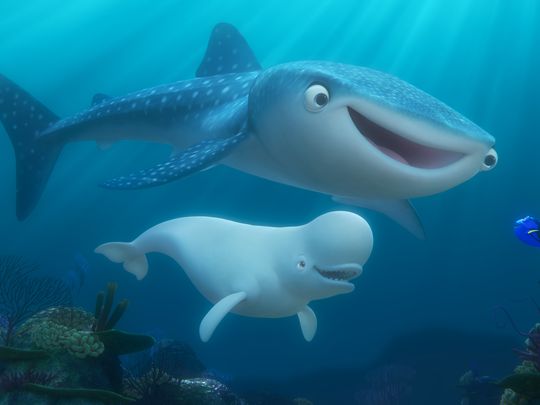
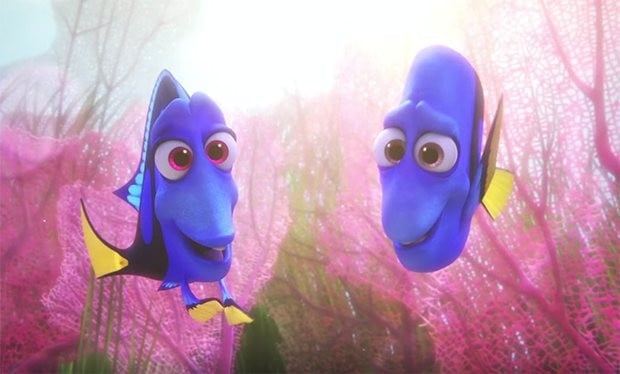
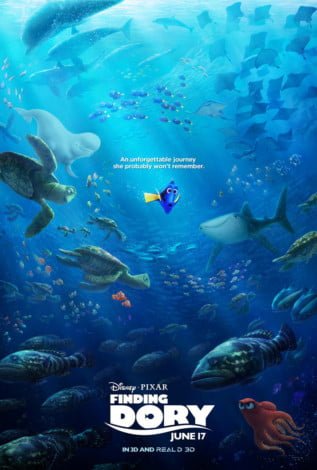
I highly enjoyed the movie, and found myself laughing out loud more for this one than Finding Nemo, but I’m 37 now with a 4-year old nephew who accompanied me. When the original was released, I was 24 and about to head across the country to attend grad school solo, in a place I knew no one.
Anyway, I loved this movie, but I have to nitpick at the one thing that grated on me…for. A year and a half as an undergrad I was pursuing a degree in Marine Biology, with the intent on studying my favorite aquatic mammal–the beluga whale, an ARCTIC whale. The beluga is only found in very cold habitats, so I was unable to fully immerse myself in the world of “Finding Dory,” because I couldn’t get over the fact that Bailey was in warm water.
My husband and I enjoyed the film. As did the about 50 little kids. We had several laugh-out-loud moments. You can take your kids and every one can have a good time.
Great Review.
You really nailed it.
I greatly enjoyed the new movie. Seen it twice already.
My sole complaint is the utterly ridiculous “truck” sequence at the end.
The “after the credits” cookie is funny.
I was shocked that in 2 movie theatres full of people, only 4 other people stuck around for that bonus scene.
Guess they weren’t aware.
My four year old (who has been looking forward to the film for months) would agree with your assessment. According to her, “It wasn’t as good as I thought it would be.”
bad horse, bad horse
Thanks for the review. I waited to read it until after we took our daughter to see Finding Dory today. While I can see the points you make, the movie was, well, somewhat boring for my husband and our six year old. Granted, this may be partially because we got the book & had read the story several times before seeing the movie.
Finding Nemo had joy, sorrow, loss, fear, triumph and grit. Finding Dory had a series of improbable events featuring characters that just didn’t connect emotionally.
We went to the first showing today, so there was a full theater of families with young kids. The disconnect was obvious in many of these families, as it was the first Disney/Pixar movie we’ve seen in theaters in recent years that had multiple kids being taken out for discipline for bad behaviors resulting from (in my opinion) boredom.
Though Dory does not have ADHD, those who do have it often suffer from some short term memory loss at times. Wouldn’t it be great if they made a heartfelt movie about a character who suffers from ADHD? Perhaps this would increase awareness and help with the reduction of intollerance and ingnorance.
Tom, what a well-written review (well, they all are, but this in particular blew me away)! You are so insightful and a very productive critic. This makes me very excited to see the film… I think I might even rush out for its Friday opening!
Hey I didn’t know where to put this so please pass it along.!!! The celebrations website that you mentioned in you email is corrupted with a Trojan malware dropper. Please let your subscribers know that they should not visit the site!! The drive by download served up by the site is classified as /FakejQuery.BD!tr. This malware was just classified on June 4th 2016. Fortinet used as a reference.
My family loved Finding Nemo and have watched it many times since it first came out. We have been waiting for a sequel for years. However, I feel like I am hesitant to see it because I am always worried about how movies portray biological families vs. adoptive families, since my three children were adopted as infants. Even though they are now teenagers, I am protective of how these things are explained to the audience. Please tell me that it’s not like that and I have nothing to worry about…? Thanks – I love your reviews and trust what you have to say.
It is definitely not like that at all. Definitely see the movie and enjoy! It is a great movie and you have nothing to worry about 🙂
I won’t say that you have nothing to worry about, there are definitely things that you might want to talk to your kids about …. that any parent might, but particularly for foster, adoptive and other non-traditional/bio parents should probably talk through with their kids before or after seeing the movie. The film deals with abandonment and loss as well as the sadness and confusion that comes with those topics (though in an upbeat and pixar way), and while it has a sweet ending it might be problematic for some in terms of the framing of what ‘happily ever after’ looks like here. I myself am adopted and know that for so many kids movies there is such a focus on the preservation of bio families which can be frustrating. I would say that depending on the age and sensitivity of your kids it might be worth previewing it or if not just having a check in about the way Dory’s situation is represented.
I’m actually excited to see it. I will also go on record that I enjoyed the Good Dinosaur. Thanks for the review from a trusted source Tom. Here’s to popcorn, an icee, and some new Pixar.
Mike D
Geez, I can’t even think of the last time I had a lemon cake.
“…[S]idebar: contrary to some reports, I don’t think aquariums are presented in a negative light in Finding Dory.”
Very glad you included this in your review, and very glad to hear it. 🙂
I’m really looking forward to this film, I remember first hearing about it a few years ago when I was completely obsessed with Pixar. This review made me even more excited.
May I ask how you got to see it already?